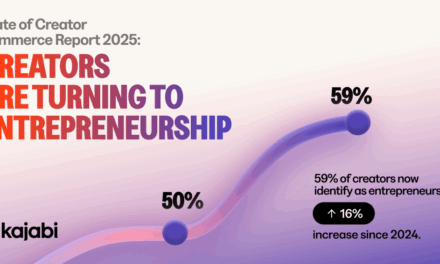Marketers can be excused if they are facing cognitive dissonance about artificial intelligence (AI). They may be struggling to implement foundational marketing/technology tools, but they are expected to be ready for new AI applications that are way more complex.
AI can mean different things to different people. Let’s get some clarity on terminology. AI is a branch of computer science that tries to add human-like cognitive skills to computers. Machine learning (ML) is often used interchangeably with AI, but ML is actually a branch of AI. ML has several tools in its repertoire, and one technique, deep learning, has made exponential progress in recent years. Just think of it as an approach in which, when fed with sufficient data, software tries to put two and two together, develops rules and reasoning and gets better over time.
You’ll find that most of the buzz around ML relates to only one of the classic 4Ps of marketing: promotion. But I’d argue that ML has implications for all the 4Ps.
Product. What does the customer want from the product or service? Across industries, ML is becoming core to the product itself. In the automotive field, self-driving cars are a few years away, but some degree of self-driving functionality is becoming part of the standard kit. In healthcare, cognitive software assists medical practitioners to diagnose conditions and provides second opinions. In financial services, credit ratings and risk profiles for lending and insurance underwriting increasingly rely on ML algorithms. Several paralegal and research tasks are done by machines, and in the media, there is software that writes automated stories (e.g., sports and financial news). Companies use a mix of automated and human translations to achieve large-scale translation, and schools and colleges are starting to use ML tools for instruction and evaluation. In other words, ML is part of the product definition itself.
Pricing. This is a bread-and-butter activity for marketers and already quite mature in practice. For example, consider the dynamic pricing use cases in verticals such as airlines, ecommerce, and hotels. The key here is to understand that even such dynamic practices that consider variations in demand and supply assume a static cost structure. But as previously mentioned, the product is getting redefined—which means that product attributes change and the underlying cost curves also shift and influence pricing.
Promotion. Many of the ML applications you can buy today tend to fall in this category. You’ll find a plethora of tools for better audience segmentation, dynamic (web) content generation, targeted promotional offers and discounts, customized campaigns, and so on. ML helps discern new insights and nuances not possible before.
Place. How and where customers look for your product, how they become aware of your product—both across physical stores and digital channels—ML can significantly shape these customer interactions and journeys. Consider the following:
- Recommendations—Not surprisingly, at “the everything store,” Amazon, recommendations drive nearly a third of revenues. Recommendation engines are at the heart of online content and commerce.
- Catalogs—Each page of an online shopping catalog is algorithmically built on-the-fly.
- Ad placement—There is an arms race of sorts and a bidding contest in the background, to show a targeted ad, when you visit a popular site or use an app.
- New channels/interfaces—There are several other use cases: image search finds visually similar products, and natural language processing (NLP) helps you mine social media for customer sentiment or build chatbot interfaces.
As you can see, significant pieces of ML are popping up across all the marketing mix elements. We saw that in some instances, ML features constitute the core of the product. More often, it helps improve different attributes of the product or services and enhances the value-add to the customer. To be sure, the technology is still evolving, and you’ll find the maturity to be uneven. But smart marketers will be proactive in identifying and adopting ML opportunities across their marketing mix.






